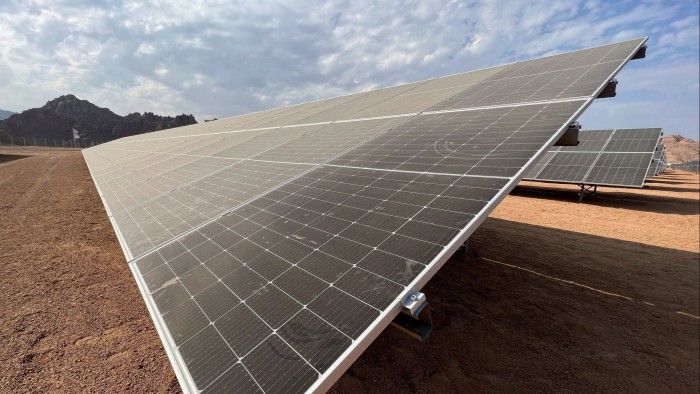Stay informed with free updates
Simply sign up to the Fund management myFT Digest — delivered directly to your inbox.
One of the world’s largest multilateral green funds has hailed “a new era for climate finance” after issuing its first bond to help raise the trillions of dollars needed to combat global warming.
The Climate Investment Funds, which is hosted by the World Bank, said on Wednesday it had secured $500mn for the debut bond of one of its funds, after receiving orders totalling more than $3bn from investors.
Its move comes as multilateral funds, which pool money from rich countries to invest in developing economies, look to leverage their resources to find the money to deal with climate change.
Economists have warned that developing countries will need more than $1tn in external finance annually to pay for the transition to a greener economy and adapt countries to warming temperatures.
Concerns have mounted among economists, diplomats and campaigners that climate financing needs will be squeezed by stretched government budgets and a drop in potential US support. Incoming president Donald Trump has described climate change as a “hoax”.
The collapse of a coalition of asset managers aimed at driving climate action this week also reinforced fears of declining interest from investors in green investments.
But Tariye Gbadegesin, chief executive of the CIF, told the Financial Times that the oversubscribed bond was “a ray of light that is coming through a lot of those dark clouds”.
She added that CIF’s borrowing programme was especially important because “shifting politics” and “shifting context like Covid” had meant other sources of financing might “ebb and wane”.
In the past multilateral climate funds would typically invest the money they received from governments in emerging markets, and seek to persuade other investors to join in the funding project.
The CIF is backed by 15 donor countries who have pledged more than $12bn, with a mandate that the money is used to tap other investors for more capital.
The three-year bond marked the first time a multilateral climate fund has leveraged the balance sheet of one of its own funds. The World Bank acts as the fund’s treasury manager.
“These bonds will multiply the funds available for scaling-up clean technology and infrastructure in developing countries — not in ten years, but now, when it’s most critically needed,” Gbadegesin said.
She hoped it would mark a new era for climate finance, creating “a good precedent for other multilateral climate funds to be able to use capital markets to scale and to create a multiplier effect”.
More than half of the investors in the bond, which was listed on the London Stock Exchange, were asset managers, insurance or pension funds.
Demand for green bonds has remained strong in recent years, with issuances hitting more than $600bn last year, according to BNP Paribas.
Last November a group of economists estimated that about half of the extra $1tn needed every year by 2030 to deal with climate change would have to come from the private sector.
At the UN COP29 climate summit in November, almost 200 countries agreed that rich nations would take the lead in providing at least $300bn for developing countries.
Among the options governments are considering to attract the private sector are guarantees that reduce the risk of investing in developing countries. Last year, the EU and the Danish government signed a €71.7mn guarantee for a new sustainable fund, where they would take the first hit on any losses.
Read the full article here

